|











|
It
is Saturday, 31st October 1998, about 20 o'clock, the sun had set an hour
ago and we have just crossed the Cyrenian Desert and the lights of Tobruk
emerge before us. The illumination is awe-inspiring as in most of the
cities of Libya. We manage to find a hotel with reasonable prices at first
try. During an evening walk we notice that we are in the historical
center of Tobruk.
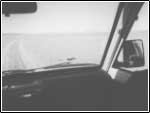 In
our hotel room in the evening we recall everything we went through since
16th October 1998 when we had set off from Brno. The time-tight journey
to Italian Trapani where we boarded a ferry, the first night in Africa
(it was rainy), the visit of the Colosseum in El-Djem, the unsuccesful
night crossing of the Tunisia-Libya border during which we had exhausted
our tourist visa, the correctness of the officials during our second crossing
of the border, the visit of Tripolis and antique sights in Leptis Magna
and the long way to Tobruk lined with both living and dead camels. In
our hotel room in the evening we recall everything we went through since
16th October 1998 when we had set off from Brno. The time-tight journey
to Italian Trapani where we boarded a ferry, the first night in Africa
(it was rainy), the visit of the Colosseum in El-Djem, the unsuccesful
night crossing of the Tunisia-Libya border during which we had exhausted
our tourist visa, the correctness of the officials during our second crossing
of the border, the visit of Tripolis and antique sights in Leptis Magna
and the long way to Tobruk lined with both living and dead camels.
 The
first destination in Tobruk was to find the war cemeteries. These are
located to the south, over the city. The first cemetery we find is the
French. Concrete crosses with marble desks with name, rank and date of
death. There is a word INCONNU (unknown) on many of them.After documenting
it we drive to the English cemetery. This one is much larger as there
are bodies of English, Australians, New Zealanders, Indians, Arabians,
Polish and of course Czechoslovakian soldiers. We have our own mounds
and each nation has a different type of gravestone. Bothe cemeteries,
French and English alike, are preserved carefully with lots of green vegetation.
After having taken pictures we leave for the German mound. It is a square
building that looks like a fortress. Inside, on the walls are the names
of over six thousand German soldiers fallen in Northern Africa. From this
mound, Tobruk and its surroundings can be clearly seen. The
first destination in Tobruk was to find the war cemeteries. These are
located to the south, over the city. The first cemetery we find is the
French. Concrete crosses with marble desks with name, rank and date of
death. There is a word INCONNU (unknown) on many of them.After documenting
it we drive to the English cemetery. This one is much larger as there
are bodies of English, Australians, New Zealanders, Indians, Arabians,
Polish and of course Czechoslovakian soldiers. We have our own mounds
and each nation has a different type of gravestone. Bothe cemeteries,
French and English alike, are preserved carefully with lots of green vegetation.
After having taken pictures we leave for the German mound. It is a square
building that looks like a fortress. Inside, on the walls are the names
of over six thousand German soldiers fallen in Northern Africa. From this
mound, Tobruk and its surroundings can be clearly seen.
No more is it a white city,
there are factories and stores to the east, the harbor got bigger and
the old city is grey. There is a new district on the western edge of the
city, with five floor blocks of flats in sand-brown colour. It is a couple
of hours before the dusk, so we go 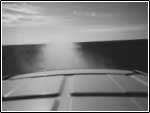 to see the line defended by our soldiers on the turn of 1941/1942. After
a short effort we find the first pill-box built in rock (it is not before
we return to our hotel room that we find out that it was S23), partially
filled up with rubbish. In another pill-box we found (S25) the writings
by Czechoslovakian soldiers are still preserved on the walls. The dusk
came as fast as usual and we have to return to Tobruk.
to see the line defended by our soldiers on the turn of 1941/1942. After
a short effort we find the first pill-box built in rock (it is not before
we return to our hotel room that we find out that it was S23), partially
filled up with rubbish. In another pill-box we found (S25) the writings
by Czechoslovakian soldiers are still preserved on the walls. The dusk
came as fast as usual and we have to return to Tobruk.
In the morning of 2nd November 1998 we decided to go to take some pictures
of the old buildings of Tobruk (the church, the school etc.) and then
leave for the perimeter. After asking a policeman for permission to take
a picture of the church we go through a course around police stations
where we were supposed to obtain a permission, and at 16.00 captain Nadjib
allows us to take a picture of the church but nothing elese. At 17.45
we manage to obtain flowers, which we lay before the monument of Czechoslovakian
soldiers on the cemetery the next day. Unfortunately at 21.05 most of
the frowers fade, but we are unable to get ahold of any others.
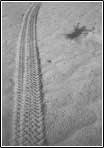 On
Tuesday, 3rd November, we drive to lay some flowers for the Czechoslovakian
Legionnaires Community and the Military-historical Club Erika Brno on
the cemetery. After ducumenting we drive to the perimeter. In great heat
we find more pill-boxes and of course some remains of the WWII, such as
barbed wire, shrapnel fragments, tins (there are lots of these everywhere),
empty cartridges, parts of MG ammo belts and even an Italian hand grenade.
We do not get to the sea, because there is a functional well in the vadi
and we do not want to risk problems with the police. After observing the
perimeter we drive to the place of command post. Unfortunately a breakdown
of the car had caused that we did not get there. After repairs, which
ended after the dusk, we return ti the hotel. On
Tuesday, 3rd November, we drive to lay some flowers for the Czechoslovakian
Legionnaires Community and the Military-historical Club Erika Brno on
the cemetery. After ducumenting we drive to the perimeter. In great heat
we find more pill-boxes and of course some remains of the WWII, such as
barbed wire, shrapnel fragments, tins (there are lots of these everywhere),
empty cartridges, parts of MG ammo belts and even an Italian hand grenade.
We do not get to the sea, because there is a functional well in the vadi
and we do not want to risk problems with the police. After observing the
perimeter we drive to the place of command post. Unfortunately a breakdown
of the car had caused that we did not get there. After repairs, which
ended after the dusk, we return ti the hotel.
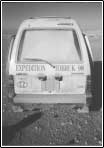 The
whole next day, Wednesday, 4th November, we spent on the positions, beginning
in the area of the command post, but we find no remains or traces. We
continue with the observation to the hinterland till we get to the S11
pill-box which had not been defended by Czechoslovakians but Polish soldiers.
We return back from it. We find more fortifications, but most of them
are destroyed. We did not manage to visit the pill-box S19 "HONZA" near
the Derna-Tobruk road because there is a police station nearby. The car
we had seen when we were leaving the positions was a police car and it
caught up with us just as we started to prepare our dinner. Fortunately
all is explained so that we have no problem. That day there is the full-moon
and its rise was very colourfull. The
whole next day, Wednesday, 4th November, we spent on the positions, beginning
in the area of the command post, but we find no remains or traces. We
continue with the observation to the hinterland till we get to the S11
pill-box which had not been defended by Czechoslovakians but Polish soldiers.
We return back from it. We find more fortifications, but most of them
are destroyed. We did not manage to visit the pill-box S19 "HONZA" near
the Derna-Tobruk road because there is a police station nearby. The car
we had seen when we were leaving the positions was a police car and it
caught up with us just as we started to prepare our dinner. Fortunately
all is explained so that we have no problem. That day there is the full-moon
and its rise was very colourfull.
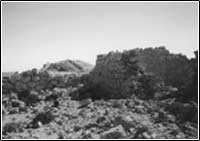 On
Thursday, 5th November, we pay for the hotel and leave in the direction
of Bir Hakim. We stop at the police station and two policemen set off
with us to navigate us through 25 km of desert and mine fields from WWII.
Crossing these 25 km of desert takes us an hour but it is worth the troubles.
We find remains of an old fortification, lots of barbed wire, canysters
and tins. There is also an abandoned French cemetery, completely devastated.
The road to and from Bir Hakim is lined by craters after mine explosions.
Then we last look at Tobruk and set off in direction of Derma, Bengazi. On
Thursday, 5th November, we pay for the hotel and leave in the direction
of Bir Hakim. We stop at the police station and two policemen set off
with us to navigate us through 25 km of desert and mine fields from WWII.
Crossing these 25 km of desert takes us an hour but it is worth the troubles.
We find remains of an old fortification, lots of barbed wire, canysters
and tins. There is also an abandoned French cemetery, completely devastated.
The road to and from Bir Hakim is lined by craters after mine explosions.
Then we last look at Tobruk and set off in direction of Derma, Bengazi.
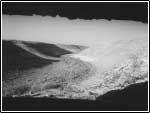 During
the trip back we stop to see antique sights, which can be found in great
numbers in Libya. In Tunisia we stopped to see the Maretha line museum,
the place where german forces tried to stop the Allies in their advance
from El-Alamein. The last military-historical stop was the Monte Cassino
in central Italia, a place of harsh fights from the years 1943-44. There
we visit a rebuilt monastery and a Polish war cemetary. During
the trip back we stop to see antique sights, which can be found in great
numbers in Libya. In Tunisia we stopped to see the Maretha line museum,
the place where german forces tried to stop the Allies in their advance
from El-Alamein. The last military-historical stop was the Monte Cassino
in central Italia, a place of harsh fights from the years 1943-44. There
we visit a rebuilt monastery and a Polish war cemetary.
The journey from Tobruk to
Brno took 15 more days. Summed up, we drove 11 910 km in our reliable
SUBARU and we used up 975 litres of fuel.
Translation Jan Filip
See the photos in our photogallery
!!
See the video " Tobruk war cementery"
!!
|
